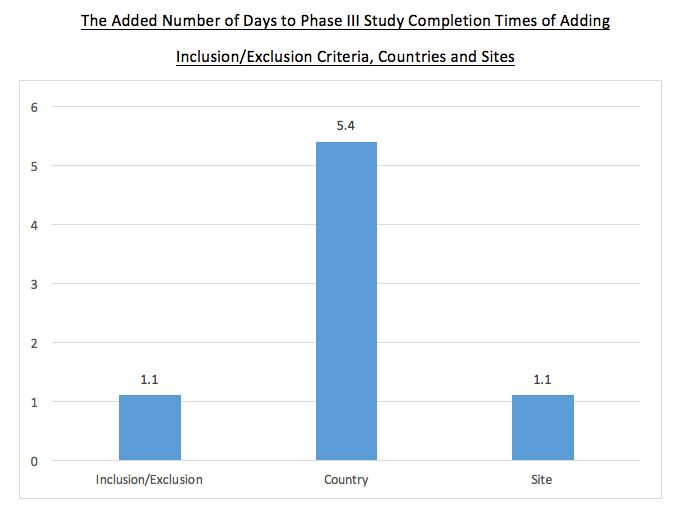Measuring the Added Time of Complicated Phase III Studies
This analysis uses a large dataset to forecast the study completion time costs of specific protocol designs and execution plans.
Performance metrics also inform a growing portion of clinical trial activity. Large datasets increasingly allow us to forecast the study completion time far more accurately of Phase III clinical trials by understanding the study completion time costs of specific protocol designs and study execution plans. Three examples include protocol inclusion/exclusion criteria, number of study countries and number of study sites. ClinicalTrials.gov. data are useful to illustrate these costs. This federally mandated database for all companies conducting studies under FDA auspices has become a widely cited data source. The number of mandated data fields has become quite significant in recent years, with missing data for most of these fields usually well under 3%. Using OLS regression for the entire dataset we see that, controlling for study differences down to the indication level each unique country in the execution plan adds 5.4 days. Ten additional countries means many more days to study completion. Each additional inclusion/exclusion criterion adds 1.1. days. Each additional unique site in the study execution extends study completion by 1.1 day. With this dataset it is even possible to determine the time that conducting a study in a particular country adds. Or, even how these overall study completion differences differ by any number of other considerations such as therapeutic area. There are a large number of variables in ClinicalTrials.gov whose impact can be assessed. With large data sets like ClinicalTrials.gov it is possible to measure and anticipate clinical trial completion times with much greater accuracy.

Harold E. Glass, PhD, Dean's Professor, University of the Sciences in Philadelphia
Putting Collective Insights Into Action to Advance Cancer Care: Key Examples From ASCO 2025
June 27th 2025At ASCO 2025, clinical operations leaders gained critical insights into how AI tools, bispecific antibodies, and evolving treatment paradigms are reshaping trial design, endpoint selection, and patient stratification.
Unifying Industry to Better Understand GCP Guidance
May 7th 2025In this episode of the Applied Clinical Trials Podcast, David Nickerson, head of clinical quality management at EMD Serono; and Arlene Lee, director of product management, data quality & risk management solutions at Medidata, discuss the newest ICH E6(R3) GCP guidelines as well as how TransCelerate and ACRO have partnered to help stakeholders better acclimate to these guidelines.
Funding Cuts Threaten Diversity in Clinical Research
June 27th 2025In this video interview, Kyle McAllister, co-founder, CEO, Trially, discusses how recent federal funding cuts are likely to undermine research focused on underrepresented populations, and why long-term investment in community-based studies is essential to closing persistent health equity gaps.